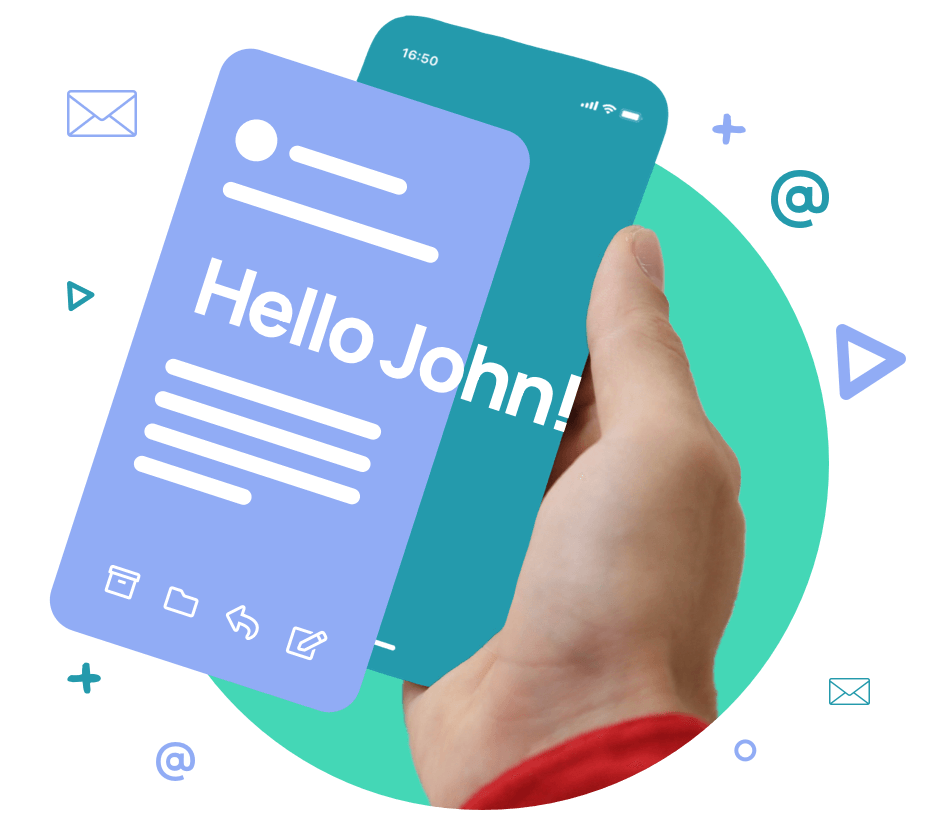Quick Links
In today’s digital world, companies rely heavily on online forms to collect information from users. These forms can be used for various purposes, like lead generation, customer feedback, and event registration.
But with so many options available, which type of form is best for your needs?
This blog post dives into the debate of conversational vs. classic forms, exploring their pros and cons to help you decide.
Classic Forms: The Familiar Workhorse
Classic forms, also known as lead generation forms, are the traditional format you’re probably familiar with. They typically present a list of questions on a single page, requiring users to fill in the blanks or select options from a dropdown menu.
Advantages
While classic forms might seem outdated, they still offer several advantages:
- Simplicity: Classic forms are straightforward and easy to understand for both creators and users. Setting them up is often quick and doesn’t require any special skills.
- Flexibility: Classic forms can be customized to fit various needs. You can add different question types, include checkboxes and radio buttons, and organize the layout for optimal flow.
- Accessibility: Classic forms are universally accessible across different devices and browsers. This ensures everyone can access and submit your lead capture forms without technical difficulties.
Disadvantages
Classic forms also have some drawbacks:
- Low Engagement: Filling out a long list of questions can be boring and make people not want to finish the form. Did you know that a study by Exploding Topics found that 60% of customers are likely to come back if they have a personalized shopping experience? This shows how important it is to make the whole customer journey positive, and long forms with lots of questions can make that journey worse.
- Limited Interaction: Classic forms offer little room for interaction. Users simply answer questions without any guidance, which can lead to confusion or errors.
- Dated Feeling: In today’s interactive world, classic forms can feel outdated and impersonal. This might negatively impact the user experience for your brand.
- Reduced Conversion Rates: According to a study by Pro Face Off, asking for a phone number in a classic form can lower your conversion rate by 5%. This is because users may be hesitant to give out their personal information upfront, especially on lengthy forms.
Use Cases for Classic Forms
- Lead Generation: This remains a top use case for classic forms, especially for capturing leads during social media campaigns where users can sign up for email lists or request quotes. Here, keeping the forms concise and only requesting essential information can improve conversion rates and form completion rates.
- Customer Feedback: Classic forms are still widely used for post-purchase surveys and general customer satisfaction ratings due to their simplicity and ease of use.
- Event Registration: Event registration forms are a perfect example of classic forms as they efficiently collect attendee information like names and dietary restrictions.
- Job Applications: While online job applications are becoming more interactive, classic forms are still commonly used for applicants to submit resumes and cover letters.
Conversational Forms: A Modern Approach
Conversational forms aim to change the way users interact with online forms. Instead of a long list, they present questions one at a time, mimicking a conversation.
Advantages
The conversational format offers several benefits:
- Higher Engagement: Conversational forms feel more interactive and engaging than classic forms. Users feel like they’re having a conversation, making it less tedious to complete the form. This is the way form completion rates increase.
- Improved User Experience: Conversational forms can guide users through the process with clear instructions and conditional logic. This reduces confusion and improves the overall user experience.
- Mobile-Friendly: Conversational forms are typically designed for mobile devices, making them perfect for users on the go. This is crucial in today’s mobile-first world.
Disadvantages
Despite their advantages, conversational forms have some limitations:
- Complexity: Creating conversational forms can be more complex than classic forms, especially for those with intricate logic or branching questions. This might require technical expertise or specialized tools.
- Accessibility Concerns: While most conversational forms are accessible, some might not be optimized for screen readers or users with disabilities. It’s important to ensure inclusivity when designing them.
- Newer Technology: Conversational forms are a relatively new technology. While they’re gaining popularity, some users might still be unfamiliar with the format.
Use Cases for Conversational Forms
- Lead Qualification: These forms are gaining traction for lead qualification as they can ask initial questions to determine a good fit for products or services before requesting extensive information.
- Customer Support: Integrating conversational forms into chatbots allows for a more interactive and personalized experience when addressing customer service inquiries.
- Product Recommendations: Conversational forms can be a great tool to gather information about user preferences and suggest relevant products or services in a more engaging way than traditional static forms.
Conversational vs. Classic Forms
There’s no one-size-fits-all answer to this question.
The “better” option depends on your specific needs and target audience. Consider these factors when making your decision:
- Complexity of your form: If your form requires many questions or branching logic, a classic form might be easier to manage.
- Target Audience: If your audience is tech-savvy and mobile-first, conversational forms might be a better fit.
- Overall Goal: If your primary goal is to collect data quickly and efficiently, a classic form might suffice. But if you prioritize user experience and engagement, conversational forms offer significant advantages.
The Future of Conversational Forms
While conversational forms are a relatively new technology, they are rapidly gaining traction.
Experts predict they will be used in more and more use cases in the future due to their engaging and user-friendly nature.
As technology advances and user adoption grows, conversational forms have the potential to largely replace classic forms, especially for situations where a positive user experience is crucial.
Online Form Best Practices
Regardless of the type of form you choose, there are some best practices to follow to ensure optimal results:
- Keep it concise: Limit the number of questions to avoid overwhelming users.
- Use clear and concise language: Make sure the questions are easy to understand, avoiding jargon or technical terms.
- Offer clear instructions: Guide users through the form with simple instructions or tooltips.
- Make it visually appealing: Use a clean and user-friendly design that’s easy to navigate.
- Optimize for mobile: Ensure your form is responsive and works well on all devices.
- Test and refine: Regularly test your form and make adjustments based on user feedback and completion rates.
If you need an extra help with your forms, you can use WayMore classic and conversational drag-and-drop builder which helps you seamlessly create online forms of any kind. Try it for free today!
Conclusion
Conversational forms and classic forms both have their strengths and weaknesses.
By understanding the advantages and disadvantages of each, and considering best practices for online forms, you can make an informed decision about which type of form best suits your needs.
Conversational forms and classic forms both have their strengths and weaknesses.
Remember, the ultimate goal is to create a user-friendly experience that helps you achieve your desired goals.
Curious to learn more? WayMore’s experts are ready to chat!
FAQs
Classic forms, also known as lead generation forms, are the traditional format where users are presented with a list of questions on a single page. They typically require users to fill in the blanks or select options from a dropdown menu.
Conversational forms aim to change the way users interact with online forms by presenting questions one at a time, mimicking a conversation. They guide users through the process with clear instructions and conditional logic.
Our latest blog post dives into conversational forms & shares 7 real-world examples.
Both classic and conversational forms can be effective for lead generation, depending on your specific needs and target audience. Classic forms are suitable for capturing basic contact information quickly, while conversational forms can qualify leads by asking initial questions to determine a good fit for products or services.
Absolutely! Conversational forms are typically designed for mobile devices, with a question-by-question approach that works well on smaller screens. Classic forms, while accessible, might require zooming or scrolling on mobile.
Complexity can vary. Simple conversational forms might be straightforward, but those with intricate logic or branching questions may require more technical expertise or specialized tools.
However, there are user-friendly conversation form builders available that can simplify the process significantly. WayMore is a great example, offering a drag-and-drop interface to build conversational forms without needing coding knowledge. This can save you time and ensure your forms function smoothly, even for complex scenarios.
Curious to learn more? WayMore’s experts are ready to chat!




